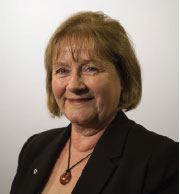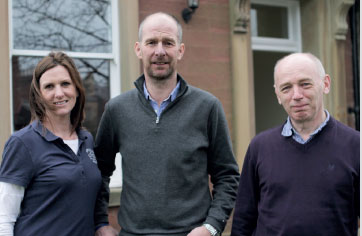Out-of-Hospital Cardiac Arrest: A Strategy for Scotland
The Out-of-Hospital Cardiac Arrest(OHCA) strategy, which has been developed in collaboration with a range of stakeholders, is a 5 year plan with the aim of ensuring that by 2020 Scotland becomes an international leader in OHCA outcomes. The headline aim is to save an additional 1,000 lives by 2020.
Foreword

Out-of-hospital cardiac arrest (OHCA) is a significant healthcare challenge in Scotland. Approximately 3,500 people undergo attempted resuscitation each year after OHCA, but currently only around 1 in 20 survive to hospital discharge.
We know from international experience that higher rates of survival are achievable. This report highlights some of the countries where a concerted effort to improve the response to OHCA has resulted in much better survival rates. Building on the examples of good practice already in place in Scotland, there is much that we can learn from international centres of excellence and apply those lessons here.
The science behind what it takes to improve survival is not difficult to understand. However, delivering a consistently effective response to OHCA is not straightforward.
The 'Chain of Survival' describes the crucial elements that can save a life when someone has an OHCA: early recognition that a cardiac arrest is happening; early cardiopulmonary resuscitation (CPR) to buy time; early defibrillation to restart the heart; and post-resuscitation intensive care to restore quality of life.
In addition to these traditional elements of the chain of survival, this strategy introduces the idea of the 'augmented' chain to acknowledge the importance of community readiness to respond to OHCA and the rehabilitation and aftercare of those patients and families involved.
A key component of this plan is to strengthen how performance and outcomes of resuscitation care are measured and reported. This information is needed to monitor the progress of this plan, but more importantly, to inform everyday clinical practice and service delivery, and so help shape the quality of care delivered to all our communities.
We have the opportunity to engage with the public and all those with an interest in OHCA in order to work together to change the way we tackle the challenge of out-of-hospital cardiac arrest. If we can get this right, many more Scottish lives will be saved - perhaps 1,000 more by 2020.
By working together and looking for ways of doing things better we have a very real opportunity to significantly improve our response to OHCA and save many lives. This document is a call to action, a commitment and an invitation to participate in a collaborative effort to ensure that Scotland becomes an international leader in OHCA outcomes.
Maureen Watt, MSP
Minister for Public Health
| Box 1 What's the difference between a 'heart attack' and 'cardiac arrest'? A heart attack is a sudden interruption to the blood supply to part of the heart muscle. It is likely to cause chest pain and permanent damage to the heart. The heart is still sending blood around the body and the person remains conscious and is still breathing. A cardiac arrest occurs when the heart suddenly stops pumping blood around the body. Someone who is having a cardiac arrest will suddenly lose consciousness and will stop breathing or stop breathing normally. Unless immediately treated by CPR this always leads to death within minutes. A person having a heart attack is at high risk of experiencing a cardiac arrest. Both a heart attack and a cardiac arrest are life-threatening medical emergencies and require immediate medical help. Call 999 if you think you are having a heart attack or if you witness someone having a cardiac arrest. Source: https://www.bhf.org.uk/heart-health/conditions/cardiac-arrest.aspx |
| Box 2 The Story of a Survivor: The Chain of Survival Gregor (44) is normally very fit and healthy. He collapsed at home in rural East Lothian and was discovered by his 10-year-old son who alerted the patient's wife. Gregor's wife started CPR while his 13-year-old daughter called 999. With encouragement from the ambulance control call taker, the two children ran barefooted across the road and summoned help from a nearby hotel. Bystander CPR was performed until a member of the local Community First Responder (CFR) group arrived and defibrillated Gregor, restarting his heart. The ambulance service then arrived and took over care, transporting Gregor to the nearby hospital for specialist care. Gregor has made a full recovery and now has defibrillator in his chest in case this happens again. He is back at work. This case illustrates the successful operation of the chain of survival in a rural area. Early recognition that Gregor's heart had stopped, a call for help and bystander CPR with coaching from the Ambulance Control Centre (ACC) bought time until further help arrived. This part of rural Scotland can be difficult to reach quickly with an emergency ambulance and ACC were able to summon the help of a specially trained Community First Responder to continue resuscitation by using a defibrillator before the ambulance arrived. Following his hospital admission, Gregor underwent further investigations which identified the root cause of his abnormal heart rhythm which led to his cardiac arrest. Definitive treatment was then put in place. |
Contact
Email: David Cline
There is a problem
Thanks for your feedback
